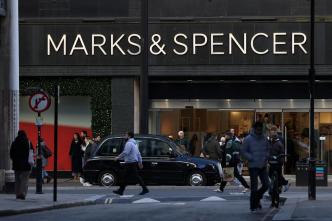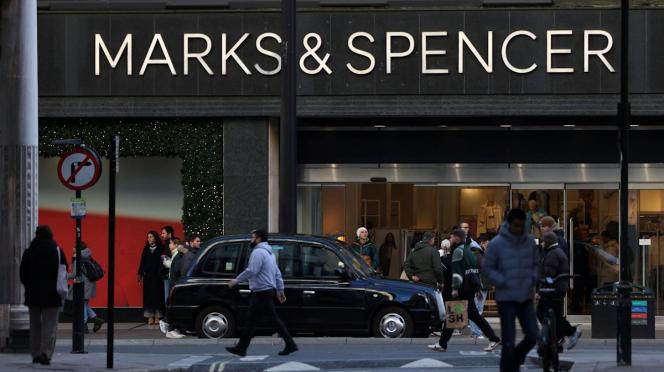401(k) savers stayed on course through market volatility, Fidelity found
Retirement savers weathered a chaotic stretch of market gyrations in the first three months of the year, consistently adding to their savings, according to Fidelity Investments’ quarterly analysis.
While they experienced a drop in average 401(k), 403(b), and IRA balances, mostly due to market swings, savings rates remained consistent, with the average 401(k) savings rate increasing to a record 14.3%.
“We saw a lot of positive savings behaviors among employees,” Michael Shamrell, vice president of workplace thought leadership at Fidelity Investments, told Yahoo Finance.
“It was really encouraging to see that despite a lot of things going on, and economic ups and downs, people continued to save and didn’t pull back, or make a lot of changes to their asset allocation,” he said. “As a result, we saw the individual 401(k) savings rate increase to the highest level that we’ve seen.”
To break it down, the average employee contribution rate was 9.5%, and the employer contribution rate was 4.8%. This combined savings rate of 14.3%, up from 13.5% in 2020, is the closest it’s ever been to Fidelity’s suggested savings rate of 15%.
“For years, the individual savings rate was stuck at 8%,” Shamrell said.
Overall, average 401(k) retirement account balances dropped 3% through the first three months of this year to an average of $127,100 from $131,700 at the end of 2024. This was the second-highest average on record for the firm and an 11% increase from the start of 2024.
The data is based on 25,300 defined contribution plans at various companies across the country, covering 24.4 million participants.
Read more: How much can you contribute to your 401(k) in 2025?
In the first quarter, 17.4% of people with 401(k) accounts at Fidelity increased their savings rate, while 5% decreased. Less than 1% stopped saving altogether.
Surprisingly, only 6% changed their 401(k) asset allocation. Of those who did, about 3 in 10 moved into more conservative investments.
There are two big drivers.
First, automatic enrollment in employer-provided retirement accounts for new employees and auto-escalation each year keep the trains running through all kinds of uncertainty.
More than 1 in 4 plans now offer employer-set automatic escalation, and 35% of plans default to automatically enrolled employees at a 5% contribution rate or higher, according to Fidelity data, with an annual 1% increase until reaching roughly 10% of pay.
“The increasing use of auto escalation is a big factor in why we are seeing a gradual increase in the individual savings rate,” Shamrell said.
————-
Employees, of course, can opt out, but rarely do.
More than two-thirds of the individuals who increased their 401(k) contribution rate in the first quarter used the auto increase feature in their plan, according to Shamrell.
The second big force helping retirement savers stay calm is the marvelous target-date fund.
More than 6 in 10 Fidelity 401(k) participants had all of their savings in a target-date fund.
“That number’s even higher among Gen Z — 81% — as you can imagine, because they’re a generation where a lot of them have been automatically enrolled in these funds,” Shamrell said.
Nearly all 401(k) plan sponsors, including Fidelity, use target-date funds when they automatically enroll workers in a retirement plan.
With a target-date retirement fund, you choose the year you’d like to retire and buy a mutual fund with that year in its name (like Target 2044). The fund manager allocates your investment between stocks and bonds, typically made up of index funds, tweaking that to a more conservative mix as the target date nears.
Target-date funds help 401(k) participants automatically rebalance when markets shift and as they near retirement age, and they go a long way in helping people navigate uncertain markets with some peace of mind knowing that their portfolios are well-diversified and designed for long-term investing for retirement.
“They can really prevent people from going in and tinkering if they get worried,” Shamrell said.
Reaching a million-dollar-plus balance was not such an easy ride. In the first quarter, 512,000 savers had at least $1 million in their 401(k), down from 537,000 at the end of last year.
“The number of people who hit the millionaire milestone swings with the market, either up or down,” Shamrell said.
These millionaires make up a small percentage of Fidelity’s 401(k) participants, he added.
“That millionaire number, whether it’s a million-dollar lottery ticket or a million-dollar home, it just seems to be something people really view as aspirational. We’re not saying that once you get to a million, you’re done. It’s one threshold to aim for in terms of your savings efforts.”
Who are these super savers? The average savings tenure across Fidelity’s millionaire population is about 27 years, Shamrell said.
“Let’s think back to 27 years ago, that was 1998, and all the things that this population has seen — from the rise and fall of the dot-com to 9/11, to the global housing crisis, to a global pandemic. They’re really great examples of staying the course. One of the main characteristics is that they save consistently,” he said.
And they save aggressively. Their average individual savings rate is about 17.6%. If you add in the employer match it totals 26.2%.
Kerry Hannon is a Senior Columnist at Yahoo Finance. She is a career and retirement strategist and the author of 14 books, including the forthcoming “Retirement Bites: A Gen X Guide to Securing Your Financial Future,” “In Control at 50+: How to Succeed in the New World of Work” and “Never Too Old to Get Rich.” Follow her on Bluesky.
Sign up for the Mind Your Money newsletter
Read the latest financial and business news from Yahoo Finance










